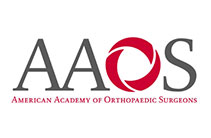
Understanding Hip Arthroscopy Surgery
Hip patients may not be used to hearing words like these from a surgeon. But times are changing. In the past, most hip procedures involved surgically opening the hip area. The surgery caused trauma to surrounding muscles and tissues and often led to months of healing and rehabilitation. Hip arthroscopy also referred to as keyhole surgery or minimally invasive surgery, is performed through very small incisions to evaluate and treat a variety of hip conditions. Arthroscopy is a surgical procedure in which an arthroscope is inserted into a joint. Arthroscopy is a term that comes from two Greek words, arthro-, meaning joint, and -skopein, meaning to examine.
Leader in Hip Arthroscopy in New York
Today, Dr. Bharam and his team are leaders in hip arthroscopy – a much less invasive approach, and the fastest growing field of orthopedic medicine. Dr. Bharam is recognized internationally for his pioneering work in this field. He teaches his advanced techniques to colleagues around the globe and has presented at numerous international hip meetings.
With hip arthroscopy, a miniature video camera is threaded into the hip joint. Dr. Bharam views the amount and type of injury or other problem. He then inserts the instruments needed for the repair through other small incisions. When the surgery is done, only a few sutures or sometimes just a bandage can be all that’s needed to close the incisions.
After arthroscopy, patients are given specific instructions about activity and rehabilitation. Physical therapy is usually prescribed to get patients back to normal hip function and strength.
Arthroscopic Hip Surgery Treatments
Hip arthroscopy is an option for patients who need:
- Debridement of loose bodies: Clearance of bone chips or torn cartilage debris causing hip pain. Bone chips or torn cartilage debris cause hip pain and decreased range of motion and can be removed with hip arthroscopy
- Removal of adhesions: Adhesions are areas of built-up scar tissue that can limit movement and cause pain in the hip area
- Repair of torn labrum: The labrum lines the outer edge of the “socket” or acetabulum to ensure a good fit. Tears can occur in the labrum causing hip pain
- Removal of bone spurs: Extra bone growth caused by injury or arthritis that damages the ends of the bones cause pain and limited joint mobility
- Partial Synovectomy: Removal of portions of the inflamed synovium (joint lining) in patients with inflammatory arthritis can help to decrease the patient’s pain. However, a complete synovectomy requires an open, larger hip incision
- Debridement of joint surfaces: Conditions such as arthritis can cause the breakdown of tissue or bone in the joint
- Repair after Trauma: Repair of torn ligaments caused by trauma
- Evaluation and diagnosis: Patients with unexplained pain, swelling, stiffness, and instability in the hip that is unresponsive to conservative treatment may undergo hip arthroscopy for evaluation and diagnosis of their condition
Arthroscopy can also help in the evaluation and diagnosis of an unexplained or unresponsive hip condition such as swelling, stiffness, and instability.











